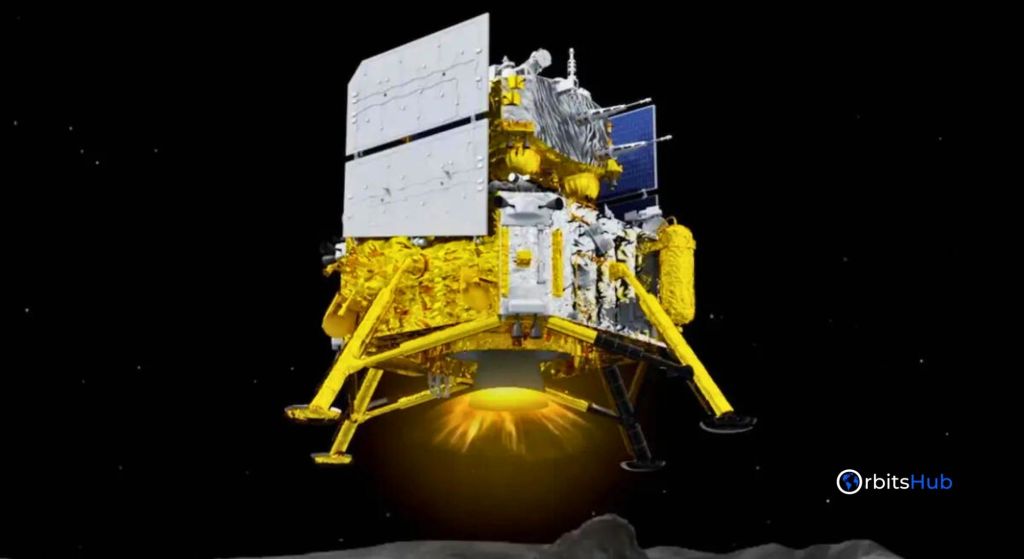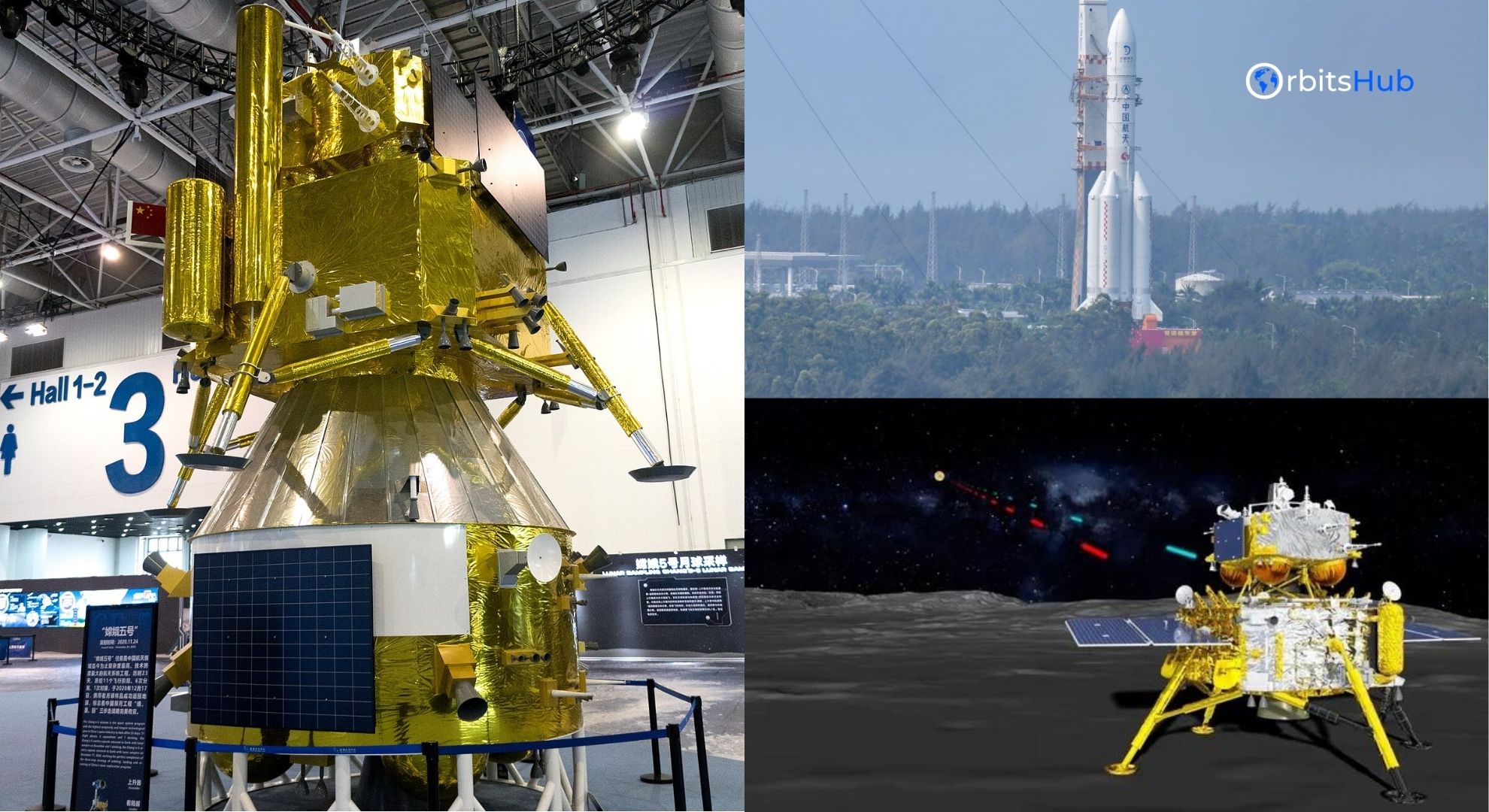China landed the Chang’e-6 mission on the Moon’s far side in a fantastic feat of space exploration. No other nation has achieved this, advancing humanity’s search for our celestial neighbour. The China National Space Administration (CNSA) declared the Chang’e-6 lander’s successful landing in the Apollo Crater in the South Pole-Aitken Basin at 6:23 a.m. Beijing Time on Sunday, June 2. At 6:23 p.m. EDT (2223 GMT) on June 1, the probe “successfully landed in the pre-selected area,” according to CNSA officials.
Pioneering a New Era of Lunar Exploration
The Chang’e-6 mission shows China’s dedication to space research and knowledge expansion. China has reinforced its status as a space exploration powerhouse and prepared the stage for future missions that will reveal the genesis and evolution of our cosmic companion.
“I have been analyzing the Chang’e-4 mission’s scientific data that landed on the Moon’s far side. I am constantly excited to have new findings from the ongoing rover data,” said Macau University of Science and Technology assistant professor Xu Yi. Thus, the Chang’e-6 mission excites me.”
Unlocking the Secrets of the Lunar Far Side

The Chang’e-6 mission’s primary goal is to collect and return lunar surface samples from the far side, which has never been done previously. These unusual samples may explain the rarity of black volcanic seas known as maria on the far side of the Moon.
Chang’e-6 is the first human sampling and return mission from the far side of the Moon, per CNSA. It requires many engineering advances, huge risks, and complexity.” The mission uses an onboard drill to collect 4.4 pounds (2 kilos) of lunar soil and rock from the surface and up to 6.5 feet (2 meters) deep.
Unraveling the Lunar Enigma
The Chang’e-6 mission’s samples will be carefully examined to understand the Moon’s history and evolution. By comparing these samples to those from the near side, which Chang’e-5 collected in December 2020, researchers expect to learn about the compositional differences between the lunar hemispheres.
The samples may also contain material from the lunar mantle, affording a unique look into the Moon’s depths and vital information about its composition, evolution, and the early solar system.
A Technological Marvel: The Chang’e-6 Mission Architecture
The Chang’e-6 mission is a remarkable feat of engineering and technological prowess. After launching on May 3, the spacecraft spent several weeks surveying its intended landing site and preparing for the momentous touchdown.
Upon arrival in lunar orbit, the Chang’e-6 lander employed a variable 7,500-newton-thrust engine to decelerate and initiate its descent sequence. As it approached the lunar surface, the lander executed rapid positional adjustments at approximately 2.5 kilometres. It was followed by a hovering phase at around 100 meters for precise hazard avoidance, utilizing LiDAR and optical cameras to identify a safe landing spot.

Overcoming Challenges: Communication and Support Systems
One of the significant challenges associated with exploring the far side of the Moon is the need for more direct communication with Earth-based stations. China deployed the Queqiao-2 relay satellite to overcome this obstacle, facilitating seamless communication with the Chang’e-6 mission during its critical landing phase and subsequent operations.
The success of the Chang’e-6 landing marks China’s fourth successful lunar landing from four attempts and the second on the far side of the Moon, following the historic Chang’e-4 mission in January 2019. It is also the third lunar landing in 2024, preceded by Japan’s SLIM in January and Intuitive Machines’ IM-1 Odysseus lander in February.
Scientific Payloads and International Collaboration
In addition to its primary objective of sample collection, the Chang’e-6 mission carries a diverse array of scientific payloads and international collaborations. A small rover is expected to be deployed onto the lunar surface for short-term operations. France’s DORN, the Swedish Institute of Space Physics Negative Ions at the Lunar Surface (NILS), and an Italian passive laser retro-reflector will aid this investigation.
The Next Steps: Sample Return and Future Missions
With the successful landing accomplished, the Chang’e-6 mission now enters a critical phase involving collecting and returning lunar samples to Earth. Within 48 hours of landing, an ascent vehicle will launch itself and the collected samples from atop the Chang’e-6 lander, propelling them into lunar orbit.
The ascender will then rendezvous and dock with the waiting Chang’e-6 orbiter, where the samples will be transferred to a reentry capsule for their journey back to Earth. The capsule is expect to touch down in the grasslands of Inner Mongolia on June 25, after which the precious lunar material will be meticulously handle and analyzed in specialize facilities.

Paving the Way for Future Lunar Exploration
China’s lunar exploration program has launched more complicated and demanding missions over the past 17 years, including Chang’e-6. After Chang’e-6’s success, China wants to launch Chang’e-7 in 2026 and Chang’e-8 in 2028 to analyze the Moon’s south polar region’s resource potential and test lunar base construction technology.
These robotic flights are helping China reach its 2030 objective of a crewed lunar mission. To begin a new age of human presence on the Moon, the government plans to build the International Lunar Research Station (ILRS) near its south pole in the 2030s with Russia, Belarus, and Pakistan.
A Giant Leap for Lunar Exploration: Chang’e-6 Mission
China’s Chang’e-6 mission’s landing on the Moon’s far side marks a significant step forward in humanity’s space exploration. This mission will illuminate the Moon’s creation, evolution, and early solar system by overcoming far-side exploration hurdles and retrieving priceless lunar samples. The world eagerly anticipates the stunning discoveries of the Chang’e-6 samples as China pushes space research with its ambitious lunar program. This mission reaffirms China’s leadership in space exploration and celebrates human curiosity, tenacity, and the pursuit of knowledge.
Ready to elevate your maritime and aviation ventures? Explore the world of possibilities with OrbitsHub! From consultancy to strategic guidance, we’ve got you cover. Dive into orbitshub.com now to unlock the future of your endeavours. Reach out to us to learn more!




